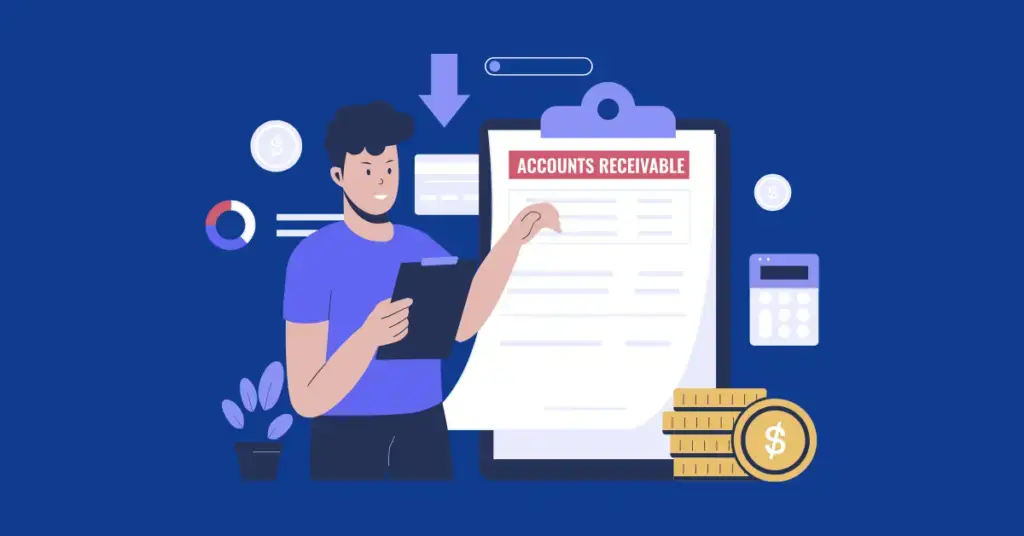Managing your accounts receivable turnover is essential to maintaining healthy cash flow for any business. Accounts receivable (AR) represents the outstanding invoices a company is owed by its customers for goods or services provided. Failing to optimize how efficiently you collect these receivables can lead to cash flow issues, impeding your ability to pay suppliers, invest in growth, and keep operations running smoothly.
In this blog, we will explore 10 actionable tips to increase your accounts receivable turnover, helping you improve cash flow and maintain financial stability.
Why Is Accounts Receivable Turnover Important?

Accounts receivable turnover measures how quickly a company converts its credit sales into cash. A higher AR turnover ratio indicates that the company collects payments faster, while a lower ratio signifies slow collection. Improving this turnover benefits businesses in several ways:
- Improved Cash Flow: Quick collection of receivables ensures you have cash on hand to cover operating expenses, pay suppliers, and reinvest in your business.
- Stronger Financial Position: A higher accounts receivable turnover ratio boosts liquidity, enabling your business to manage liabilities more effectively.
- Better Credit Control: Monitoring AR turnover helps you assess the reliability of your customers and improve credit management strategies.
- Informed Decision Making: A fast AR turnover provides finance teams with accurate projections for future cash inflows, allowing for better financial planning.
Given the importance of a healthy AR turnover, let’s dive into the steps you can take to optimize it.
1. Know Your Accounts Receivable Turnover Ratio
The first step to improving your AR turnover is understanding where you currently stand. The accounts receivable turnover ratio is a key metric that measures how efficiently a company collects credit sales.
The formula for calculating the AR turnover ratio is as follows:
AR Turnover Ratio = Net Credit Sales / Average Accounts Receivable
Where:
- Net credit sales = Sales on credit – Sales returns – Sales allowances
- Average accounts receivable (AR) = (AR at the beginning of the period + AR at the end of the period) / 2
A lower ratio suggests that your business may be struggling to collect payments, while a higher ratio indicates timely collections. Regularly monitoring this ratio will help you identify trends and make informed adjustments to your AR process.
2. Recheck and Revise Your Accounts Receivable Processes
One of the most effective ways to boost your AR turnover is to review and optimize your accounts receivable processes. This includes revising your credit policies, speeding up the invoicing process, and implementing more efficient follow-up procedures.
You can shorten the payment terms you offer to customers to encourage faster payments. For instance, if you currently offer 60-day terms, consider reducing them to 30 or 45 days. Also, ensure invoices are sent out promptly after a sale, as delays in billing will result in delayed payments.
Regularly review your AR turnover ratio to gauge whether the changes you’re implementing are effective. The more closely you monitor these activities, the more control you’ll have over improving collections.
3. Generate an Accounts Receivable Aging Report
An accounts receivable aging report is a critical tool for tracking outstanding invoices based on how long they’ve been due. This report categorizes receivables into different time frames (e.g., 0-30 days, 31-60 days, 61-90 days, and beyond 90 days) and helps you identify which customers are falling behind on payments.
By having a clear understanding of which invoices are overdue and by how much, your AR team can prioritize collection efforts more effectively. This will not only help improve your accounts receivable turnover ratio but also reduce the risk of bad debts.
4. Implement On-Time and Accurate Invoicing
Late or inaccurate invoicing can significantly delay collections. Ensure that your business issues invoices as soon as a service is provided or a product is delivered. Timely billing helps ensure timely payment.
Equally important is the accuracy of the invoices. Errors or discrepancies on invoices can lead to delays, as customers may dispute the charges. To avoid this, implement a thorough invoicing process that checks for any mistakes before invoices are sent out.
5. Utilize Cloud-Based Accounting Systems

A cloud-based accounting system can dramatically improve the efficiency of your billing and accounts receivable management processes. Cloud software automates many aspects of invoicing, payment tracking, and reporting, helping you save time and reduce human errors.
Additionally, cloud systems provide real-time access to your financial data from anywhere. This means your accounting team can monitor AR processes, generate reports, and collaborate with others even when they’re not in the office. Automating these tasks increases accuracy and ensures that invoices are sent out on time, contributing to a faster AR turnover.
6. Clearly Define Payment Terms
If your payment terms are vague or unclear, your customers may not feel the urgency to pay on time. Be sure to clearly define and communicate your payment terms in every contract, agreement, and invoice.
For example, specify the due date and the penalties for late payments. You could include a clause outlining any interest or fees for overdue invoices. Transparent payment terms will not only help set expectations with your clients but also support smoother collections.
Consider offering payment plans or setting credit limits for customers who frequently purchase high-value items or services.
7. Offer Multiple Payment Options
Traditional payment methods like checks or wire transfers can slow down the accounts receivable process. Offering multiple payment options—such as credit card payments, electronic transfers, and online payment platforms—gives your customers more flexibility and makes it easier for them to pay on time.
Modern payment solutions can accelerate the payment process and reduce the time it takes to transfer funds into your account. In turn, this will boost your accounts receivable turnover and improve cash flow.
8. Provide Discounts or Rewards for Early Payments
Encouraging early payments is an excellent way to enhance your AR turnover ratio. Offering discounts, rewards, or other incentives to customers who pay their invoices ahead of the due date can motivate timely payments.
For example, you could offer a small discount (e.g., 2% off the total invoice) for customers who pay within 10 days of receiving the invoice. While this approach may slightly reduce your revenue per invoice, the trade-off is worth it if it helps you receive payments faster.
Incentives such as free shipping, discounts, or even small gifts can significantly impact your collections without putting too much strain on your budget.
9. Optimize Your Collections Process

Even with the best AR management practices, some customers will inevitably fall behind on payments. That’s why it’s essential to have a well-organized collections process in place.
Automating your collections using tools like pre-authorized checks, automated clearinghouses, or lockbox services can streamline the payment process and reduce the risk of missed payments.
You can also set up automated reminders that notify customers when their payments are due or overdue. Being proactive in your collections will help ensure that late payments are minimized, leading to faster accounts receivable turnover.
10. Foster Strong Customer Relationships
Building positive relationships with your clients is often an underrated but highly effective way to ensure timely payments. Customers who feel valued and appreciated are more likely to pay their invoices promptly.
A friendly email reminder or a courteous phone call can go a long way in maintaining strong customer relationships and improving your collections. If customers have a good experience with your company, they’ll be more inclined to prioritize your payments.
Investing time and effort in client relationships will ultimately pay off by reducing payment delays and boosting your AR turnover.
Conclusion
Improving your accounts receivable turnover is crucial to maintaining a healthy cash flow and ensuring the financial stability of your business. By following the 10 tips outlined in this blog—such as using cloud accounting software, generating aging reports, offering payment incentives, and optimizing collections—you can streamline your AR processes and increase the speed at which you collect payments.
Focusing on these best practices will enhance your company’s liquidity, strengthen your credit control, and enable more accurate financial planning.
Related Content






